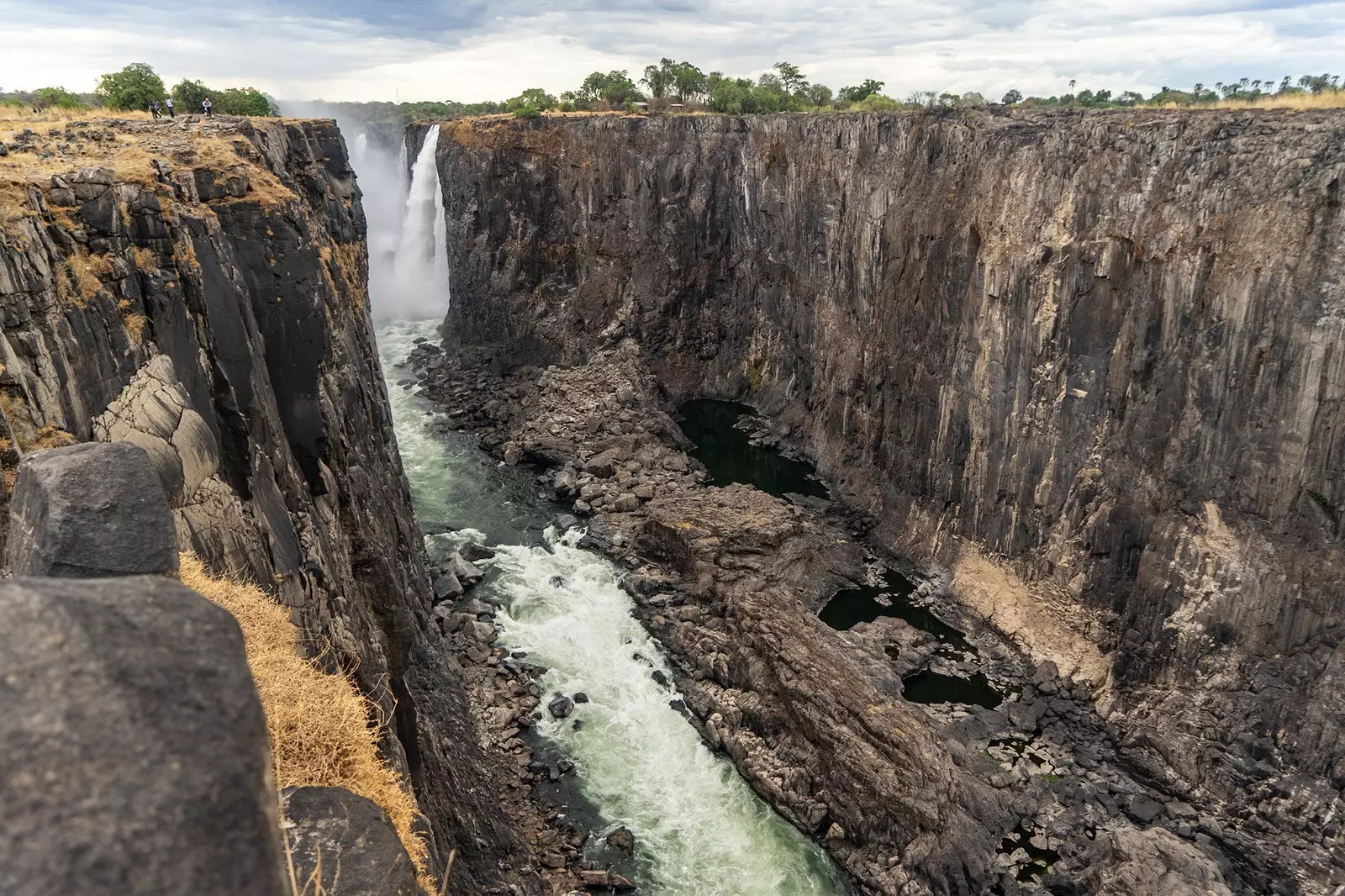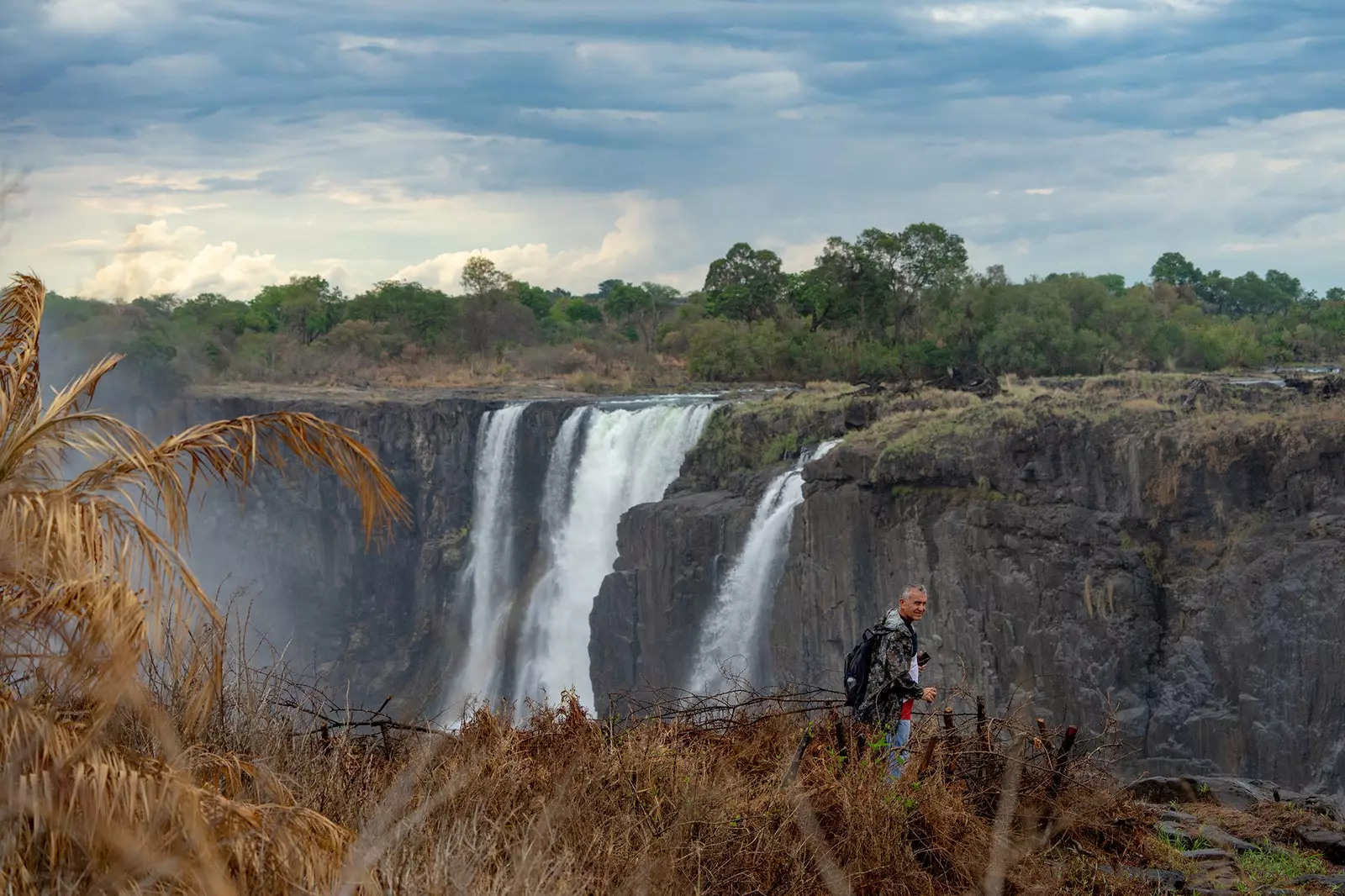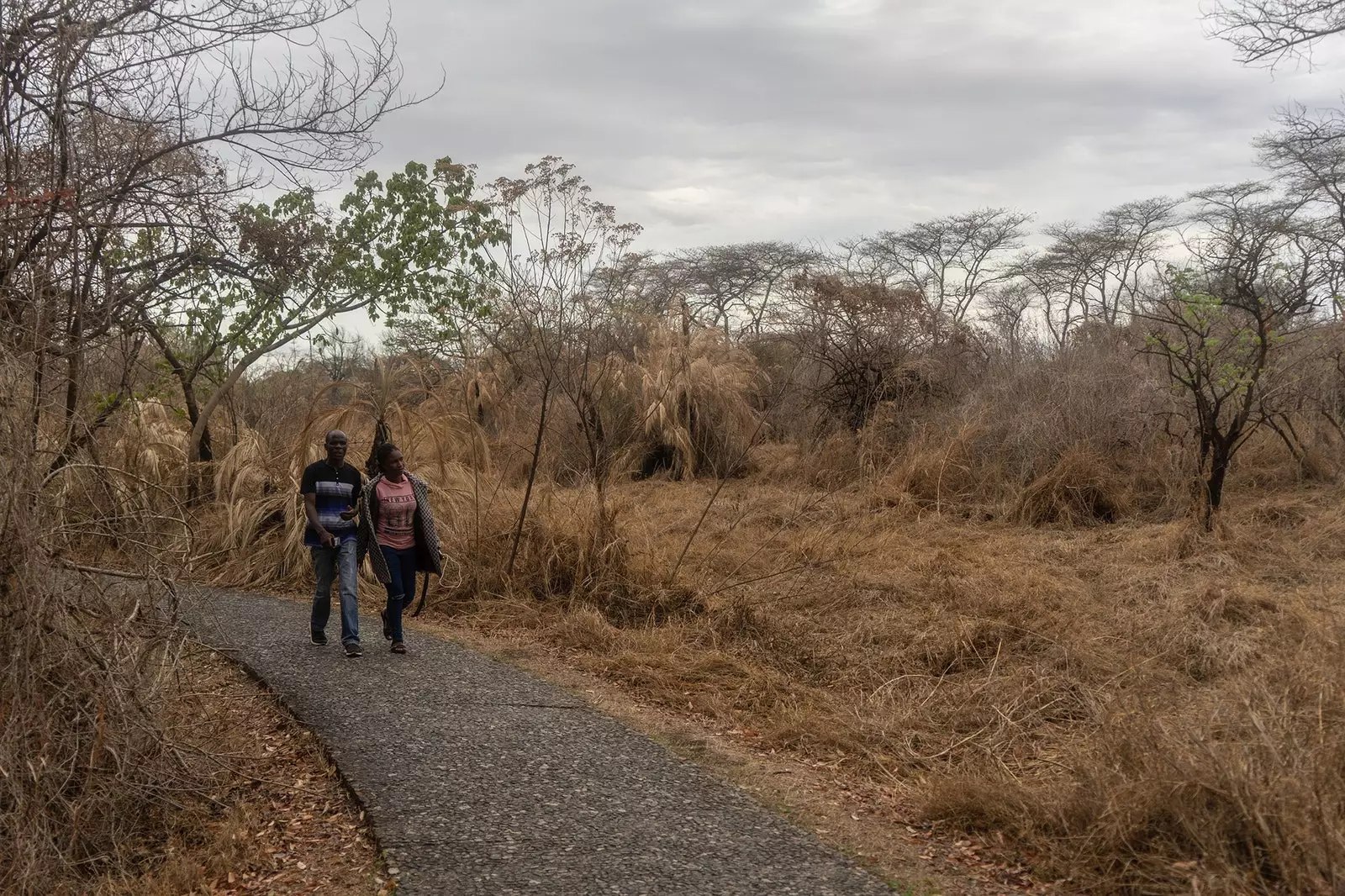
But has Victoria Falls dried up or not?
It almost looks like fake news: Is it really possible that Victoria Falls has dried up? Known since ancient times by the bordering tribes as Mosi-oa-Tunya (“the smoke that thunders”), this gigantic liquid mass lives up to its tribal name, which responds to the noise caused by the falling waters of the Zambezi River.
The photos that have been circulating on the networks lately, however, suggest that this name could be at risk, since, in them, the landscape, a World Heritage Site, located on the border of Zambia and Zimbabwe , appear completely dry.
It is not, however, what emerges from the images provided by Jorge Astorquia, an environmentalist with years of experience on the African continent. The naturalist was at the end of September flying over the falls in a helicopter, a movement with which he hoped to demonstrate that the photos published in the media and networks exposed only part of the phenomenon . Right now, according to him, the situation at the falls remains as it is in the video.
“You can see that there is a part of them that is indeed dry, but it can be clearly seen that there are a series of waterfalls that remain shooting water into the Zambezi river canyon ”, He wrote for El Ágora Diario. “We cannot say, therefore, that the falls have dried up. It is true that its flow is at its lowest point, but this is repeated every year”, he assured.
In fact, to support the video, the professional collects data from the Zambezi River Authority, which monitors its flow on a daily basis. “There they tell me that the lowest measured flow data was in the 1995/96 season, and although this past November they obtained data not seen since then, this week on December 16 they recorded a flow of 274 m³/s. It is significantly higher than the data recorded on the same dates last year, of 227m3/s, without anyone being alarmed by it in the media”, he clarifies.
Despite everything, the concern about the decrease in flow, both inside and outside Africa, is clear, according to Traveler.es: "This year, there has been a very strong drought and the locals fear that they will not be able to carry out the harvests this season. Every time it rains, it is a blessing for them. It is one of the driest areas in the world, and people live on the edge, depending a lot on the rains. Every year there are the same comments of 'let's see how the rains come', but this year it is repeated more, because the previous one was already complicated, ”recalls the expert for Traveler.es.
BUT IS IT THE FAULT OF CLIMATE CHANGE?
The cause of this drought, according to many publications, is climate change, something with which Astorquia does not agree: "The problem today in the whole world is that, every time something goes beyond what expected, we relate it to climate change, everything, whether it's a heat wave at the wrong time or a cold drop stronger than normal, ”he tells Traveler.es.
“ Climate dynamics are more complex, and you have to look at trends over many years. In this case, it seems clear that, year after year, the region is becoming more arid. But not Hollywood-style, where things suddenly turn apocalyptic or the tap to one of the largest rivers in Africa is cut off,” he notes.

November 13 photo of Victoria Falls
It is an opinion with which Julio Barea, doctor in Geology and Greenpeace sustainability expert, agrees: “The truth is that These photos are being used to put the spotlight on the climate crisis, and can be a very visual alert of what is about to happen. . It seems that they are one more consequence of the change, but it cannot be stated categorically that they are, since these conclusions must be drawn from multi-annual, even ten-year data, ”he explains.
“But what there is no doubt about -he continues- is he that CO2 levels in the atmosphere are the highest in the entire Holocene (10,000 years before present), even from the Middle Pleistocene (more than 400,000 years before the present), that is, since the dawn of humanity as we know it today. The geological record has never recorded changes of this magnitude and at this speed (I am referring to the changes that have occurred in the last few decades)”.
For this reason, the professional, although he does not dare to ensure that the drought is a consequence of the climatic emergency, does not defend the opposite either: “ To say categorically that this is not a consequence of climate change is foolhardy, Well, as I mentioned, it is necessary to see the sequence of data and the future”, he begins.
“It is true that in the months of December and January, during the dry season, the flow of the river drops, but the inhabitants of these countries had never seen them at such low levels. There may be other causes that have favored this drastic drop in water, but everything indicates that the main one has been climate change. It should be remembered that this year 2019 has been one of the hottest on record, which significantly increases the levels of evaporation and evapotranspiration, causing less water availability," he continues.

Victoria Falls environment
However, whether or not they are a direct consequence of the climate crisis, Barea thinks it is good that spotlights are made on images like this to draw attention to the emergency we are facing. “ It is important to show how climate change can affect, and how it already affects ecosystems and people in many places, and these photos are an example of it”, he tells us.
“More than 3,000 scientists from around the world (the entire UN Intergovernmental Panel on Climate Change) have no doubt that it is the result of human activity, and that this is going to have consequences (it is already having them in many places). What they still cannot predict 100% is where it will be most serious and what exactly are the impacts it will have (the models try to get closer, but it is complicated). But I insist climate change is evident, and it will affect less favored countries and people more seriously, which will make it more difficult for them to adapt.
“It is also clear that the risk is not for planet Earth, which has lived 4.5 billion years without humanity and will continue for another 4.5 billion years with or without us, until it is engulfed by a nova resulting from the explosion of the Sun. Who is at risk is the human species itself, which, in addition, will take away a large part of the current fauna and flora”, concludes the professional.
